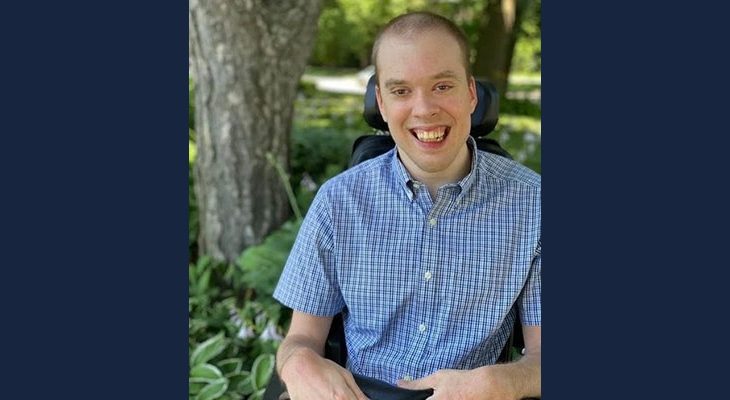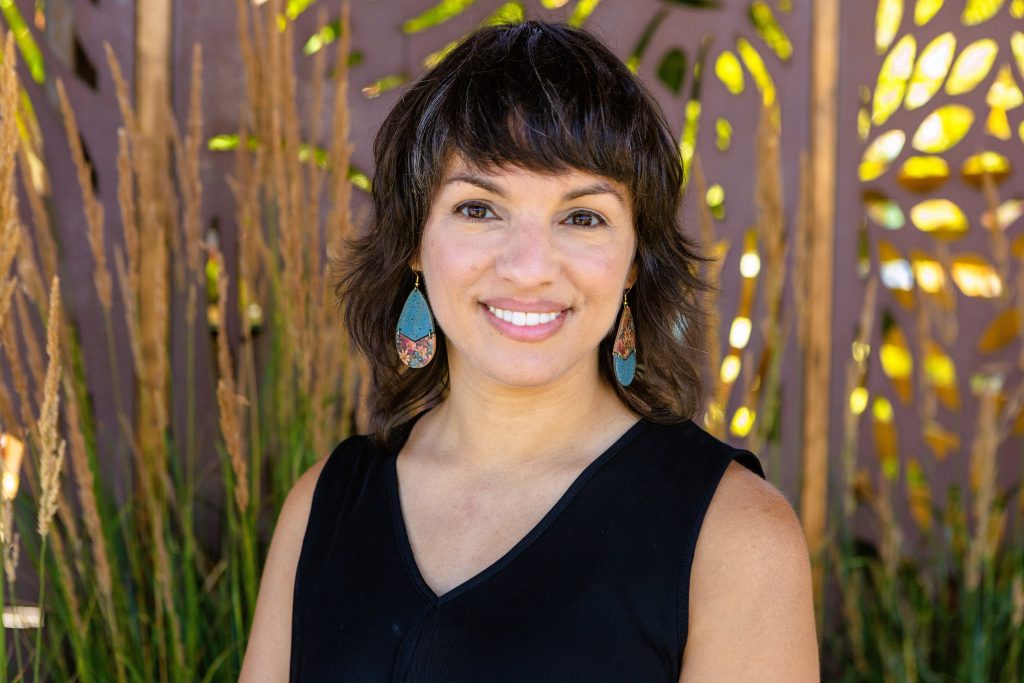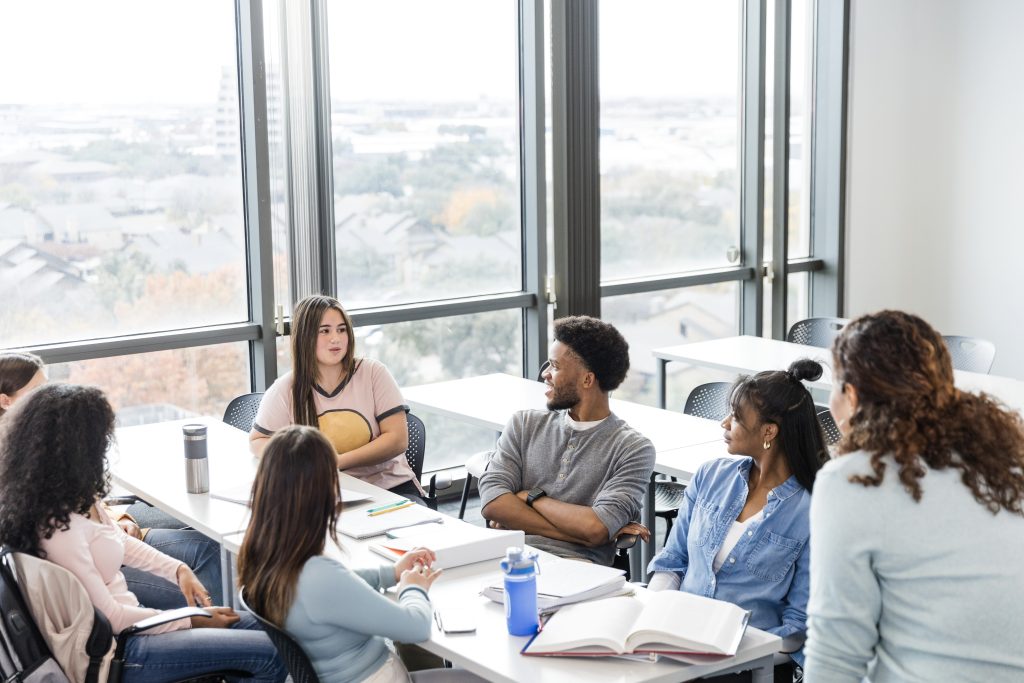It Is Time for Interfaith Leaders to Value Disabled Lives
July 24, 2020

David Gayes is a disability rights activist, Interfaith Youth Core alumnus, whose spirituality and disability are core aspects of his identity. David’s goal is to bridge the gap between faith communities and the perspectives and lived experiences of people with disabilities. David believes that is imperative for all people of faith and non-faith traditions to come together in the work of creating a humane world for all. David is a graduate of Dominican University in River Forest Illinois with a degree in Spanish Studies. Currently, David is obtaining a Masters of Intercultural Studies at Catholic Theological Union in Chicago. Read more from civic interfaith leaders like David.
You may have read about the death of Michael Hickson, a 46-year-old black disabled father of five, who was refused not only treatment for Covid-19, but also nutrition and hydration. While some may say that this was merely a complicated medical decision, the disturbing conversation between Hickson’s wife Melissa and Hickson’s physician points to an appalling reality of which disabled people are all too familiar.
Doctor: “So as of right now, his quality of life — he doesn’t have much of one,”
Melissa Hickson: “What do you mean? Because he’s paralyzed with a brain injury, he doesn’t have the quality of life?”
Doctor: “Correct.”
Tragic injustices where disabled lives end prematurely are all too common. Scholar and quadriplegic William Peace recalled a physician suggesting he discontinue treatment for a pressure sore, a non-terminal condition. Disabled people live in fear of health care providers deeming our lives unworthy of life-saving treatments.
The devaluing of the disabled life is a shameful part of our culture, as evidenced by public policies that mandate caregiving in institutions but not in our own homes; sky-high poverty and unemployment for the disabled; the disproportionate police violence of disabled Black and brown people; and widespread books and movies that emphasize the burden of caregivers while glorifying euthanasia of the disabled character. How would the valuation of Michael Hickson’s life have been different if his doctor had been taught by a quadriplegic kindergarten teacher or a blind university professor? Or perhaps if he regularly interacted with his mail carrier with Down Syndrome or got his news from a deaf reporter? Or, studied sacred texts with an autistic scholar? I submit that if we live in a society that values disability as a part of human diversity, we would make decisions in healthcare and public policy consistent with that value.
What about our faith communities? How are we modeling the value of disabled life? Disabled representation is almost nonexistent in our leadership. Many communities overtly and subtly conflate disability with “specialness” or sin/inferiority, leading disabled people to feel not only alienated and isolated from religious communities but even to view them as adversaries. Metaphors such as “deaf to God’s voice;” “paralyzed with fear;” “blind to the will of God” abound. In my Christian tradition, erasure of disability is routinely emphasized when the healing narratives are narrowly interpreted as “healing equals cure,” while missing the central message that Jesus seeks out and centers his society’s most marginalized voices. Jesus positions himself among blind people, paralytics, outcast women, and people with leprosy. He does not tell these people to go away or chastise them as undesirable. Rather, he intimately and lovingly affirms their humanity and individual experiences.
Most people strive to encounter others through mutual listening and affirmation of perspectives. Jesus calls his followers to “love your neighbor as yourself.” The Jewish Talmud teaches, “That which is hateful to you, do not do to your fellow.” Buddhism, Islam, and secular traditions have variations of this Golden Rule. One of Interfaith Youth Core’s main principles is to create a “safe space” where people feel comfortable to listen, learn, and share from different traditions as their authentic selves. Encountering others enables us to learn, grow, and value each perspective and each life.
This summer, the United States celebrates the 30th anniversary of the landmark civil rights legislation, the Americans with Disabilities Act. Unconscionably, faith communities successfully lobbied to be excluded from this legislation. Now is an opportune moment for faith and secular communities to work to right the deep societal injustices which emanate from the devaluation of the disabled life.
Action steps:
Be an ally. Ask yourself the hard questions of who is missing from your faith, social, and professional circles and why are they not present? Pass your privilege and amplify and prioritize disabled voices. Strive to ensure presentations and meetings are accessible for all – use captions and image descriptions.
Familiarize yourself with disabled perspectives, particularly multiply marginalized ones. Check out “Disability and Visibility in the 21st Century” by Alice Wong, the Netflix documentary “Crip Camp,” and the poetry of disability rights activist Laura Hershey. Follow disabled voices on social media – @RebeccaCokley, Rabbi @RutiRegan, @HabenGirma, to name a few.
From civil rights icon Congressman John Lewis, “If you believe in something, you have to go for it.” May we create a society that values disabled life.
Share
Related Articles
American Civic Life
New to Interfaith Work? Join the Emerging Leaders Mentorship Program
American Civic Life
Higher Education
What Does Interfaith Engagement Mean from an Evangelical Perspective?



